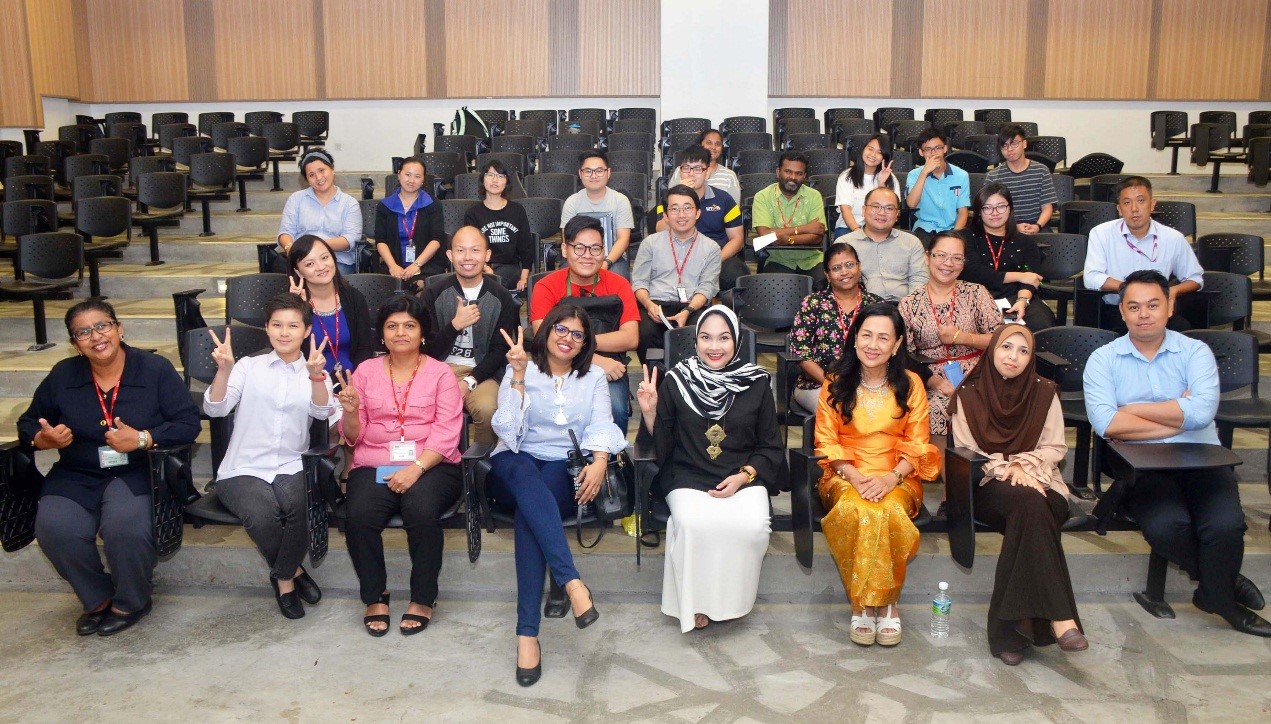| 1 |
“Writing for ISI and Scopus-Indexed Journals in the
Humanities and Social Sciences” Talk
Speaker: Prof Dr Zuraidah Mohd Don from University of Malaya (UM)

Prof Zuraidah providing tips to publishing in high-impact journals
The Centre for Modern Languages and Literature (CMLL) in collaboration with the Department of Modern Languages and Literature under the Faculty of Creative Industries invited Prof Dr Zuraidah Mohd Don from University of Malaya (UM) for a talk at Sungai Long Campus on 4 April 2018.
Prof Zuraidah is the Advisor to the Council of Language Deans at UM. She also chairs two bodies set by the Ministry of Education, namely the English Language Standards and Quality Council to oversee the teaching and learning of English Language in Malaysia.
Titled “Writing for ISI and Scopus-Indexed Journals in the Humanities and Social Sciences”, her talk set to create awareness of the demands of international journal publication and how they can make an effective contribution. The talk also offered the audience on how to publish in high-impact journals and other research outlets.
“In order to publish in the Institute of Scientific Information (ISI) journals, you must first identify the journals that you want your articles to be published in. There are various types of journal including interdisciplinary, discipline specific, themed and general journals. For PhD students, I encourage you to start with publishing research notes and review articles, particularly when you only have the data for preliminary studies,” said Prof Zuraidah.

The talk saw some researchers, academic staff and postgraduates in attendance
“The Web of Science scheme consists of around 250 subject areas encompassing science, social science, arts and humanities. Referring to its list of ISI journals would be helpful when you are choosing the suitable journal that you want to publish in your subject area. There are three categories of high impact journals, namely Science Citation Index Expanded Journals, Social Sciences Citation Index journals, and Arts & Humanities Citation Index Journals. This is a more reliable method to ensure your research papers are submitted to a trusted journal. Be more alert and do not submit your journal article to any predatory journals,” the speaker emphasised.
Prof Zuraidah added, “Publishing in high-impact journals increases the possibility of your journal articles to be cited. It also helps you to build a personal reputation for high-quality research and make yourself more visible in the research community. Besides, it indicates a researcher’s contribution to the respective faculty, institution and the research funding body. However, publishing in high-impact journals is very competitive with only 7% - 25% acceptance rate.”
“Therefore, researchers should be realistic and do not aim too high. You may attempt to publish at journals with lower impact factor at the beginning. Consider the cost, topic (if it is the trend now), access, time taken to be published, audience, and rejection rate while choosing the journals. Further, while selecting the appropriate journal for your research, you would also want to consider the implications, scope and significance of your research. It would be even more helpful if you study the journal which you are submitting your manuscript to, as it helps you to better understand the standard of papers that the editor is looking for,” She advised.
Prof Zuraidah also said, “The choice of journal will also affect how you subsequently write your abstract, introduction, research method, result presentations and conclusion. Hence, it is necessary to be more strategic when you prepare for research publication. You would need a list of journals and review them prior to making a decision on where you want it to be published. Then, you may need to plan, write, and revise your manuscripts multiple times. After you submit your manuscript to the selected journal, it will proceed to a reviewing process. Subsequently, you will be notified whether your paper is accepted or rejected. You will also need to keep up and respond to the reviewers’ comments politely if there is any.”
|




